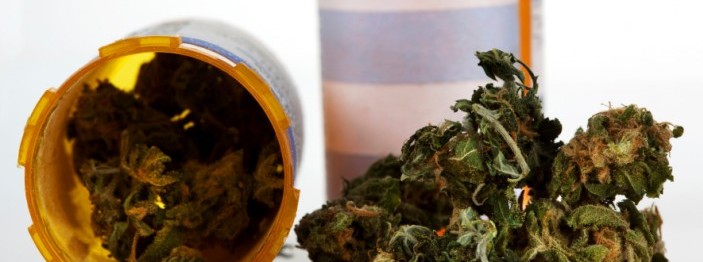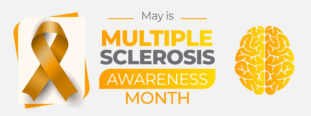Medical marijuana: an update
Medical marijuana returned to front-page news this week in Canada as health regulators retreated from their April 1 deadline that would have banned people from growing their own marijuana for medical purposes. Under the proposed Marihuana Medical Access Regulations, all permissions for the possession or home production of marijuana would expire, and those with home grow-ops would be required to destroy their crop. The method recommended by Health Canada was to grind up the plants, and mix up the plant debris with water and kitty litter.
These plans are now on hold following a court injunction. This means that people possessing or producing marijuana for medical purposes can continue to do so for the time being. But over the longer term, it’s likely that those authorized to use medical marijuana – an estimated 40,000 people in Canada – will likely need a “prescription” from their family doctor, and will be required to buy it from a government-authorized dealer.
In the U.S., medical use of marijuana has not received approval from the Food and Drug Administration and is illegal according to federal law. However, marijuana can be prescribed in 20 states and in the District of Columbia. For example, California, which voted in the Compassionate Use Act in 1996, permits the use, possession and cultivation of marijuana for medical purposes such as the treatment of MS.
A major obstacle to health regulators approving marijuana and doctors prescribing it is a lack of information about whether marijuana is an effective treatment. The following is a summary of what’s known about marijuana for the treatment of various MS symptoms.
The most studied MS symptom in marijuana trials is muscle tightness, stiffness or spasms (spasticity). The first marijuana study in MS looked at these symptoms and found that spasticity did improve in most people who smoked marijuana (Petro & Ellenberger. J Clin Pharmacol 1981;21(8-9 Suppl):413S-416S). However, the doses used (10 mg of THC [tetrohydrocannabinol], the active ingredient in marijuana) were high. A subsequent study found that the minimum dose of THC (from smoking marijuana) was 7.5 mg (Underleider and colleagues. Adv Alcohol Subst Abuse 1987;7:39-50). This corresponds to about half a dozen marijuana cigarettes a day (depending on the potency of the home grown).
The most recent study was in Canada, in which 37 people smoked one marijuana cigarette a day for three days (Corey-Bloom and colleagues. Can Med Assoc J 2012;184:1143-1150). Most people reported that their spasticity and pain improved. However, there were some drawbacks, as with any medication. Thinking ability was significantly impaired, as you might expect. Other side effects include impaired eye tracking, and difficulties with balance and posture, all of which can affect walking ability (Greenberg and colleagues. Clin Pharmacol Ther 1994;55:324-328).
As part of the medicalization of marijuana, some companies have produced cannabis (marijuana) extracts for use as an oral spray. The possible benefits are to deliver larger doses of THC in a more manageable way while avoiding the smoking part. The largest trial of THC spray was the CAMS study, which included 630 people (Zajicek and colleagues. Lancet 2003;362:1517-1526). After 15 weeks of treatment, there was a disconnect in the results. According to doctors’ objective assessment, THC had no effect on spasticity. According to the people taking the drug, about 60% said their spasticity was better. Most subsequent studies also found no objective evidence that THC works (Killestein and colleagues. Neurology 2002;58:1404-1407;Vaney and colleagues. Mult Scler 2004;10:417-424; Collin and colleagues. Eur J Neurol 2007;14:290-296).
Following this, most studies have shied away from doctors rating a change in symptoms in favour of the people themselves rating the effectiveness of the drug. And here the results are good. THC extracts do appear likely to improve how a person experiences spasticity. People often said that THC reduced the frequency and severity of their muscle stiffness (Zajicek and colleagues. J Neurol Neurosurg Psychiatry 2012;83:1125-1132; Wade and colleagues. Mult Scler 2004;10:434-441). Side effects may include an impact on thinking ability, and some have found that THC makes them a little paranoid (Aragona and colleagues. Clin Neuropharmacol 2009;32:41-47).
So overall, people with MS often report that THC – either smoked or taken as a THC extract – relieves their muscle stiffness whereas doctors see little evidence of improvement. This would seem to explain why people are keen to access medical marijuana, while doctors and regulators such as the FDA are less enthusiastic.
A few studies have looked at marijuana for the treatment of other MS symptoms. There has been only one study of the effect of a cannabis extract on tremor, and found there was no benefit (Fox and colleagues. Neurology 2004;62:1105-1109). There is a little more evidence that THC may improve nerve pain – a common and often undertreated problem in MS. Here there is no debate about objective versus subjective improvement – pain is nothing if not subjective. A study of 24 people with nerve pain due to MS or other medical conditions found that two weeks of THC provided substantial pain relief (Wade and colleagues. Clin Rehabil 2003;17:21-29). There was also the observation that THC seemed to improve bladder symptoms, but this needs to be investigated more fully.
It’s important to add that whatever the benefits of marijuana, it’s intended to relieve MS symptoms and will not have an effect on MS itself. So MS medications (oral, by injection or infusion) are still needed, with marijuana then added on if you’re troubled by specific symptoms and haven’t found relief with conventional remedies.
Share this article
Facebook Twitter pin it! Email
Related Posts
Back





